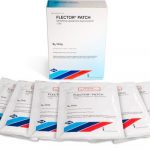Contents
Semolina vs. Flour: A Nutritional Comparison
Semolina, a coarse flour made from durum wheat, offers more nutrients than all-purpose flour, making it a healthier choice for weight loss and heart health.
Whether you’re a professional chef or a home cook, you likely have a list of staple ingredients that you use regularly in your kitchen. Flour, in particular, is an essential ingredient that provides structure and elasticity to baked goods. Considering the variety of flour options available, you may be wondering which type is best for you in terms of nutrition and usage. One alternative to regular white flour is semolina, which has its own unique benefits and drawbacks.
Flour is produced by grinding down whole or polished wheat kernels, which consist of bran, germ, and endosperm. These components can be separated and combined in different ratios to create various types of flour, including white, all-purpose, self-rising, and gluten flour, among others.
There are six types of wheat grown in the U.S.: hard red winter, hard red spring, soft red winter, soft white, hard white, and durum.
Semolina is a coarse flour made from durum wheat, a hard variety of wheat commonly used in dishes such as pasta, couscous, and bread. During the milling process, durum wheat is broken down, resulting in pale-yellow semolina with a granular and uniform texture.
Nutritional Comparison: Semolina vs. Flour
When semolina and all-purpose flour are enriched, semolina provides more essential nutrients per 100 grams, including:
- Calories: 360
- Carbs: 72.83g (26% of recommended daily values)
- Protein: 12.68g (25% of RDV)
- Fat: 1.05g (1% of RDV)
- Fiber: 3.90g (14% of RDV)
- Iron: 4.36mg (24% of RDV)
- Folate: 261mcg (65% of RDV)
In addition to these shared nutrients, semolina contains pantothenic acid, vitamin E, histidine, isoleucine, leucine, threonine, tryptophan, and valine, which are not present in all-purpose flour.
Benefits of Semolina Flour
Semolina flour offers several health benefits:
May promote weight loss: With nearly 13 grams of protein per 100g, semolina can support weight loss by increasing satiety, reducing appetite, and improving glucose metabolism. Its high fiber content also aids weight loss by promoting fullness and regulating blood sugar.
High in folate: Semolina’s naturally occurring folate levels reduce the risk of certain cancers, heart disease, and support energy production.
Source of iron and magnesium: Iron is crucial for oxygen transport and metabolism, while magnesium plays a role in bone health, blood pressure regulation, and heart health.
Supports heart health: Semolina is a good source of dietary fiber, which helps regulate blood sugar and cholesterol levels, contributing to heart health. It also contains folate and magnesium, which further support cardiovascular well-being.
Conclusion
Semolina, made from durum wheat, stands out as a healthier alternative to other flours due to its higher nutrient content. While all-purpose flour may serve its own purpose, semolina offers unique benefits for weight loss, heart health, and addressing specific nutrient deficiencies. However, its coarse texture limits its versatility in some recipes.
Source:
– Amy Myers MD: “10 Essential Nutrients For Heart Health”
– Encyclopedia of Food Grains (Second Edition): “Durum Wheat Milling”
– Harvard Health Publishing: “Eat more fiber-rich foods to foster heart health,” “Making one change — getting more fiber — can help with weight loss,” “The effect of fiber on satiety and food intake: a systematic review”
– Lockhart & Wiseman’s Crop Husbandry Including Grassland: “13.10.1 Qualities of durum wheat”
– MassInititative: “What is the role of a flour ingredient?”
– NIH: “The importance of folic acid,” “Increasing total fiber intake reduces risk of weight and fat gains in women”
– Nutrition and Functional Foods for Healthy Aging: “Chapter 14 – Vitamins and Minerals in Older Adults: Causes, Diagnosis, and Treatment of Deficiency”
– Nutrition Value: “Compare nutritional values,” “Flour, bleached, enriched, all-purpose, wheat,” “Semolina, enriched”
– PennState Extention: “Storing Staple Ingredients in the Kitchen”
– PLOS One: “The Prevalence of Anemia and Moderate-Severe Anemia in the US Population”
– U.S. Wheat Associates: “Wheat Classes”


